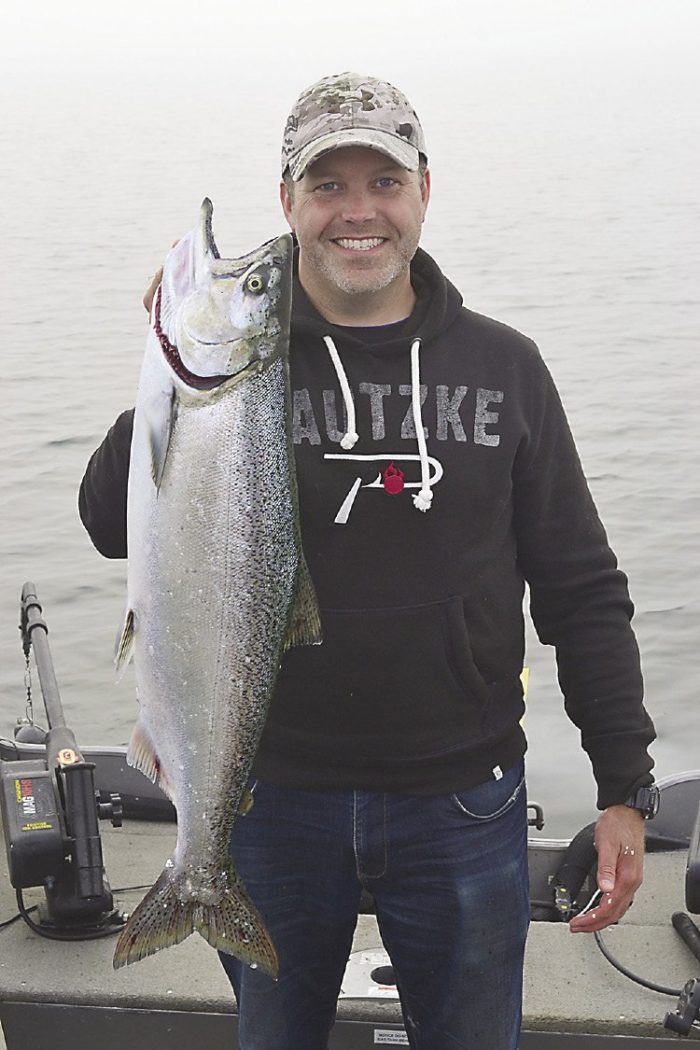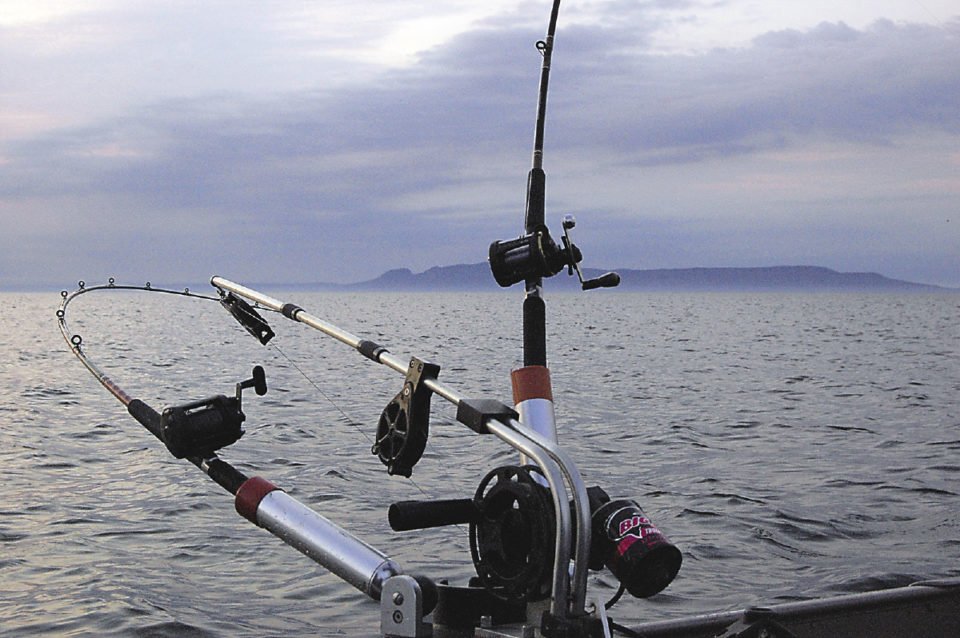Due to the passage of time, I am not 100 percent sure when my first downrigging experience occurred. It was certainly several decades ago, likely in the late 1980s. However, the one thing I do recall vividly is being quite impressed how effective the technique can be, especially in large lakes (think Superior) when the target is deep water fish such as lake trout or salmon.
Downrigging is a trolling game, and it’s also a technique that requires a fish be hooked before you touch the rod. So if you live to feel the strike of a fish, it is likely not for you. That being said, no technique can so quickly and accurately target deep fish like downrigging can. So that makes it a good tool for the boat angler to have.
Downrigging Basics


The technique known as downrigging requires you to troll a lure at set depth at all time. To do this, you need a heavy weight, a cable and some form of winch or pulley. Downrigging systems vary and can be both electrical and manually powered. The manual downrigger versions are cheaper and simpler, but require some muscle. Portable, manual downriggers work well on smaller boats. Electric-powered downriggers are easier to use, but require a larger boat, wiring and power.
Large weights known as cannonballs are attached to a cable to get the fishing line down. The cannonball weights can vary from 8 ounces to 10 pounds or more. The heavier the weight, the more vertical the cable will hang behind the boat. The cable and cannonballs are dropped down to whatever depth the angler chooses. Almost all downriggers come with some kind of counter so you know where your cannonball is at in the water column. Having said that, an electronic depth finder is a critical tool when downrigging as it will tell you how deep the water is you are fishing in. If you put out too much cable, the cannonball can get hung on bottom and this can create a dangerous situation. Always have a serious set of bolt cutters on board when you rig. You might need to cut cable occasionally.

Attaching Downrigger Line and Lures


The key to fishing with a downrigger is attaching your fishing line to the cable. There are a wide variety of tools known as releases that clip on to the cable tightly. Normally, releases are easily added and removed from the cable. The actual line clip portion of the release is just a tool that squeezes the fishing line tight. The attached cable release then carries the line and lure down to the required depth. There are different types of releases, but they all do the same thing: when a fish grabs the lure the line pops off and the angler can fight the fish without weight.
The rod is normally left bowed over in a rod holder, and when the rod pops up, a fish has struck. In a best case scenario, the fish is firmly hooked and won’t drop the lure before you can grab the rod, reel up the slack and get a tight line. Sadly, anyone who has downrigged learns quickly that some fish get off the lure before you ever get to the rod. This is just part of the reality of downrigging. Strong line, long downrigger rods and large capacity baitcaster reels allow you to have the rod nearly fully loaded in the holder. This makes it easier to get the slack up quickly at the strike. Trial and error plays a role in downrigging and you will discover there is a learning curve. Once fine tuned, however, downrigging is a remarkably uncomplicated game.
Downrigger Tips & Techniques
The actual fishing part of the downrigging equation is perhaps the easiest, but it also requires some finesse. Most anglers use lures when downrigging, with the vast majority turning to some kind of spoon. The spoons used when downrigging are normally thinner and lighter than regular casting spoons. They also come in a wide variety of unusual colours and shades including purple, black, watermelon and a nauseating green and yellow mixture often referred to as “monkey puke.”


You can also use other lures including stickbaits, like the original floating Rapala or the Rebel Fastrac. It is important that you check the action of and lure against the speed you will be trolling. Some spoons spin at a high speed and this can create a real mess with your line. Some anglers that downrig replace any treble hooks on a spoon with a single siwash hook. The thinking being that single hook will hold better than a treble. I think the jury is out on this, but a lot of it comes down to personal preference and what you have faith in.
Placement of the cannonball and lure in the water column depends on a variety of things, including where the bait fish are, where the fish are and experience. Again, having a depth finder that can show you fish and bait is key. As a general rule, salmon and actively feeding lake trout will be suspended off the bottom. If you see a few marks at a certain depth, say 30 feet, drop your cannonball to the same depth, or just slightly above it. Most predator fish are looking up for food, and a spoon flashing overhead is likely to trigger a strike. If you are running two downriggers, you can also stagger the depths so the fish have more options.





